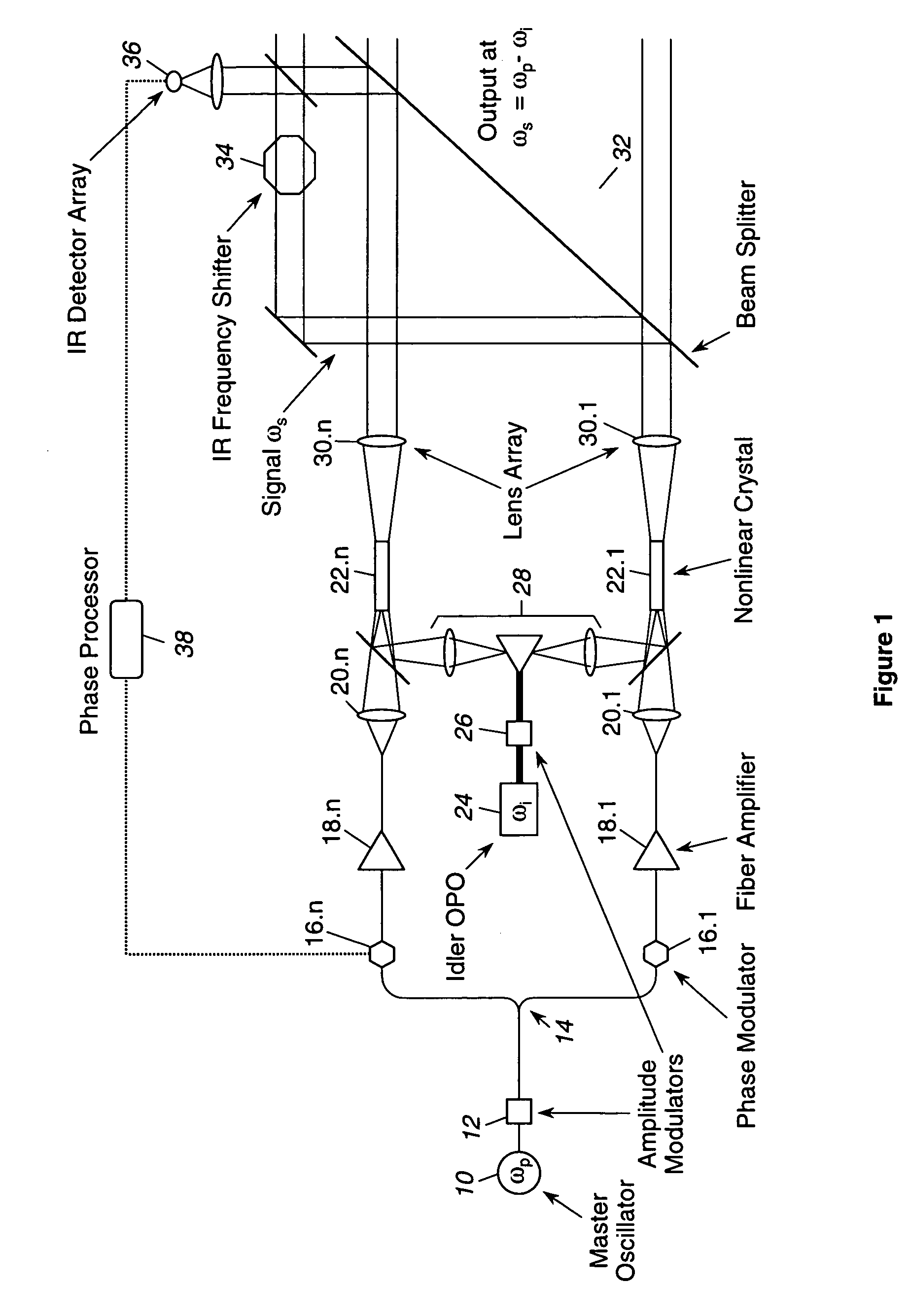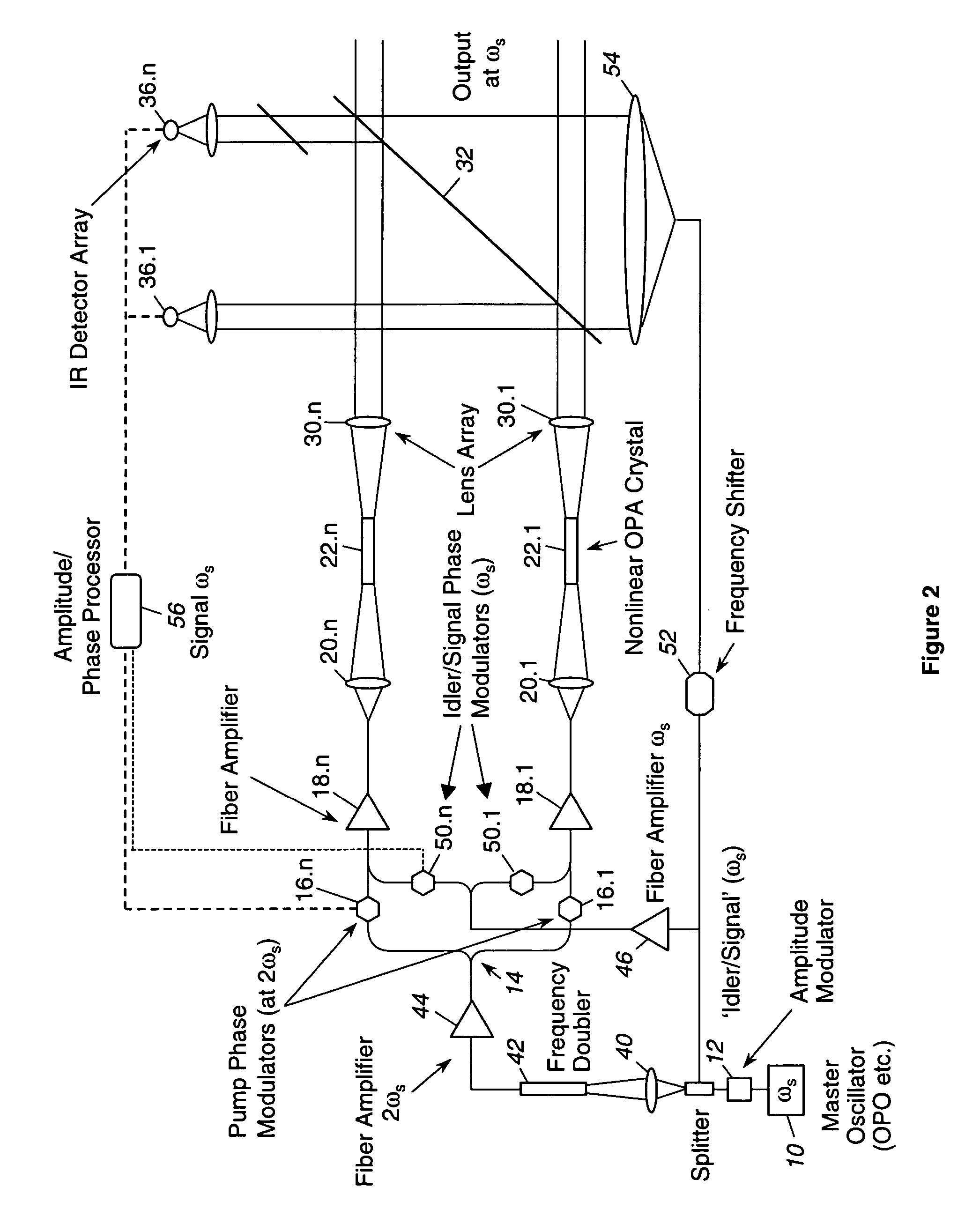Scalable wavelength shifted laser source and method
a wavelength shift and laser source technology, applied in the direction of laser details, instruments, active medium shape and construction, etc., can solve the problems of significant drawbacks, limited output power, and restricted wavelength of operation, and achieve the effect of convenient scalable to higher powers and facilitate transmission through the atmospher
- Summary
- Abstract
- Description
- Claims
- Application Information
AI Technical Summary
Benefits of technology
Problems solved by technology
Method used
Image
Examples
Embodiment Construction
[0013]As shown in the drawings for purposes of illustration, the present invention is concerned with a laser source architecture that is both scalable to high powers and is wavelength selectable, independent of the constraints normally imposed by properties of rare earth elements used in fiber amplifiers. In the past, arrays of fiber amplifiers have produced outputs that, although scalable to higher powers, have been restricted in wavelength by the gain bandwidth inherently associated with the fiber core materials. For most efficient designs, this gain bandwidth falls in the region 1000 nm to 1100 nm, which is unfortunately not a desirable wavelength range from the standpoint of eye safety.
[0014]In accordance with the invention, an array architecture is configured to provide output at a desired wavelength that is not restricted by the fiber amplifier gain bandwidth. The output is easily scalable to high powers without adversely affecting the efficiency of the device or the beam qual...
PUM
| Property | Measurement | Unit |
|---|---|---|
| wavelength | aaaaa | aaaaa |
| wavelength | aaaaa | aaaaa |
| wavelengths | aaaaa | aaaaa |
Abstract
Description
Claims
Application Information
 Login to View More
Login to View More - R&D
- Intellectual Property
- Life Sciences
- Materials
- Tech Scout
- Unparalleled Data Quality
- Higher Quality Content
- 60% Fewer Hallucinations
Browse by: Latest US Patents, China's latest patents, Technical Efficacy Thesaurus, Application Domain, Technology Topic, Popular Technical Reports.
© 2025 PatSnap. All rights reserved.Legal|Privacy policy|Modern Slavery Act Transparency Statement|Sitemap|About US| Contact US: help@patsnap.com



